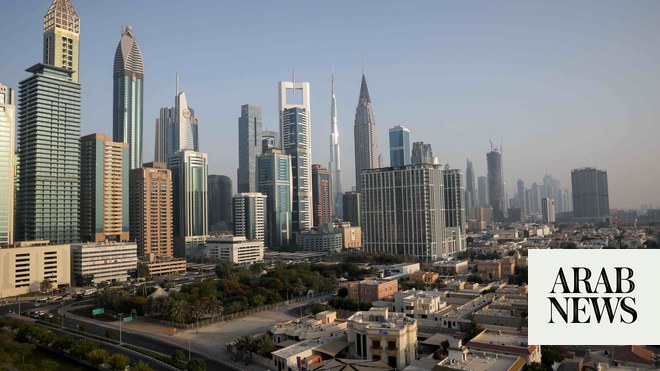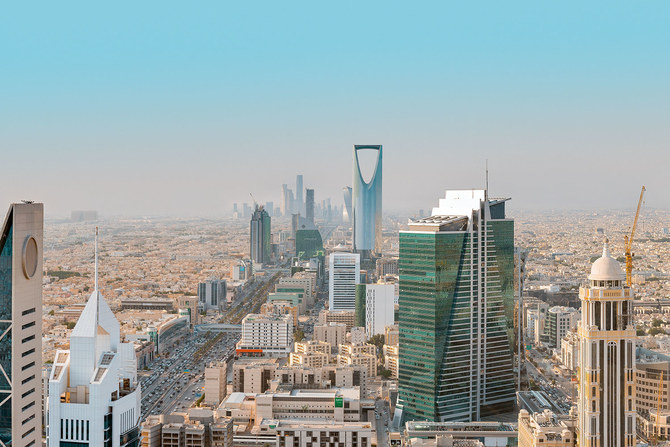
RIYADH: Saudi Arabia’s economy is projected to remain resilient, with the Kingdom’s gross domestic product expected to grow by 1.6 percent this year, accelerating to 4.9 percent by 2025, according to a recent analysis by the World Bank.
The report also indicates that Saudi Arabia’s inflation rate is likely to remain steady at 2.1 percent in 2024 and 2.3 percent in 2025, both figures lower than the average for the Gulf Cooperation Council region.
Inflation in the GCC is projected to be 2.2 percent in 2024 and 2.7 percent in 2025.
Furthermore, the analysis highlights the impact of Saudi Arabia’s Vision 2030 initiative, which has led to significant socio-economic advancements.
Female labor participation has risen from 22 percent in 2016 to 34 percent by the end of 2023, aligning with the Kingdom’s strategic goals of promoting gender equality and increasing female workforce participation.
“Key reforms in labor laws to eliminate employment discrimination, the expansion of job opportunities across various industries, and the emphasis on female labor force participation as part of Vision 2030 may have led to a substantial rise in women’s participation in a relatively short time,” said World Bank.
It added: “Economic structural reforms, accelerated by the Saudi Vision 2030 and the pandemic, may have further spurred job creation by modernizing and diversifying the economy, which has been crucial for increasing women’s labor force participation.”
The World Bank’s latest projection for Saudi Arabia’s economic growth in 2025 exceeds the previous forecast by the International Monetary Fund.
In September, the IMF estimated that the Kingdom would experience a GDP growth rate of 4.7 percent in 2025, expecting that the phase-out of oil production cuts would drive economic expansion.
Additionally, a report released last month by global credit rating agency S&P Global highlighted Saudi Arabia’s economic resilience, projecting a 1.4 percent GDP growth in 2024, with an acceleration to 5.3 percent in 2025.
According to S&P Global, this growth will be supported by the Kingdom’s diversification strategy, which aims to strengthen the non-oil private sector and reduce dependence on crude revenues.
The agency also noted that anticipated rate cuts by the US Federal Reserve are likely to benefit emerging markets like Saudi Arabia, which possesses strong growth fundamentals and increasing capital inflows.
Wider outlook
In its latest report, the World Bank projected that the overall GDP of the Middle East and North Africa region will expand by 2.2 percent in 2024 and 3.8 percent in 2025.
For the GCC region, the economy is expected to grow by 1.9 percent in 2024 and 4.2 percent in 2025.
Within the GCC, Qatar"s economy is projected to grow by 2.2 percent in 2024 and 2.7 percent in 2025. The UAE is expected to experience a GDP expansion of 3.3 percent in 2024 and 4.1 percent the following year.
Bahrain’s economy is anticipated to grow by 3.5 percent in 2024 and 3.3 percent in 2025, according to the World Bank. Meanwhile, Kuwait’s economy is expected to shrink by 1 percent this year before recovering with a growth of 2.5 percent in 2025.
Oman’s economy is projected to see marginal growth of 0.7 percent in 2024, followed by an increase of 2.7 percent in 2025.
The report also noted that the collective economic growth of oil exporters in the region is projected at 2.2 percent in 2024 and 3.9 percent in 2025.
However, the World Bank cautioned that economic growth in the MENA region remains subdued due to uncertainties exacerbated by ongoing conflicts.
“Peace and stability are the foundation of sustainable development. The World Bank Group is committed to remaining engaged in the conflict-affected areas of the Middle East and North Africa, and to building a future worthy of all people of the region,” said Ousmane Dione, vice president of World Bank for the Middle East and North Africa region.
According to the report, the Palestinian territories are on the brink of economic collapse, experiencing their largest economic contraction on record, with Gaza’s economy shrinking by 86 percent in the first half of this year.
The World Bank added that Lebanon’s economic outlook remains highly uncertain and will largely depend on the trajectory of ongoing conflicts. Meanwhile, neighboring countries like Jordan and Egypt have faced declines in tourism receipts and fiscal revenues.
Jordan is expected to see economic growth of 2.4 percent in 2024, down from 2.7 percent in the previous year, with projections for 2.6 percent growth in 2025.
Egypt’s economy is projected to expand by 2.5 percent in 2024, accelerating to 3.5 percent the following year.
The report also forecasts that Syria’s and Lebanon’s GDP will contract by 1.5 percent and 1 percent, respectively, in 2024.
“Conflict casts a long shadow on the development trajectories of countries. The World Bank estimates that GDP per capita in conflict-affected countries in MENA could have been, on average, 45 percent higher seven years after the onset of conflict. Such a loss is equivalent to the average progress made by the region over the last 35 years,” the report stated.
Areas of improvement
Despite Saudi Arabia’s progress in increasing female labor participation, the overall MENA region still has the lowest women’s employment ratio in the world, at just 19 percent.
The World Bank stated that closing gender employment gaps could lead to a remarkable 51 percent increase in per capita income across MENA countries, emphasizing that including women is essential for fostering thriving economies.
“Transforming the role of the state would lead to substantial gains in productivity. For example, the region has the largest share of public sector employees in the world, particularly women,” said Roberta Gatti, chief economist at World Bank for the MENA region.
She added: “Unfortunately, in MENA, a larger public sector does not necessarily correspond to better public goods and services. Mobilizing talent toward the private sector would improve the allocation of resources, with aggregate productivity gains up to 45 percent.”
According to the report, deploying technology and embracing digitalization will also enhance the growth of MENA economies.
“More international trade, leveraging the region’s strategic geographic location, can facilitate this process of infusion and innovation. Improving data quality and transparency – which are lagging behind by international standards — is another key lever to facilitate the diffusion of ideas,” said World Bank.












